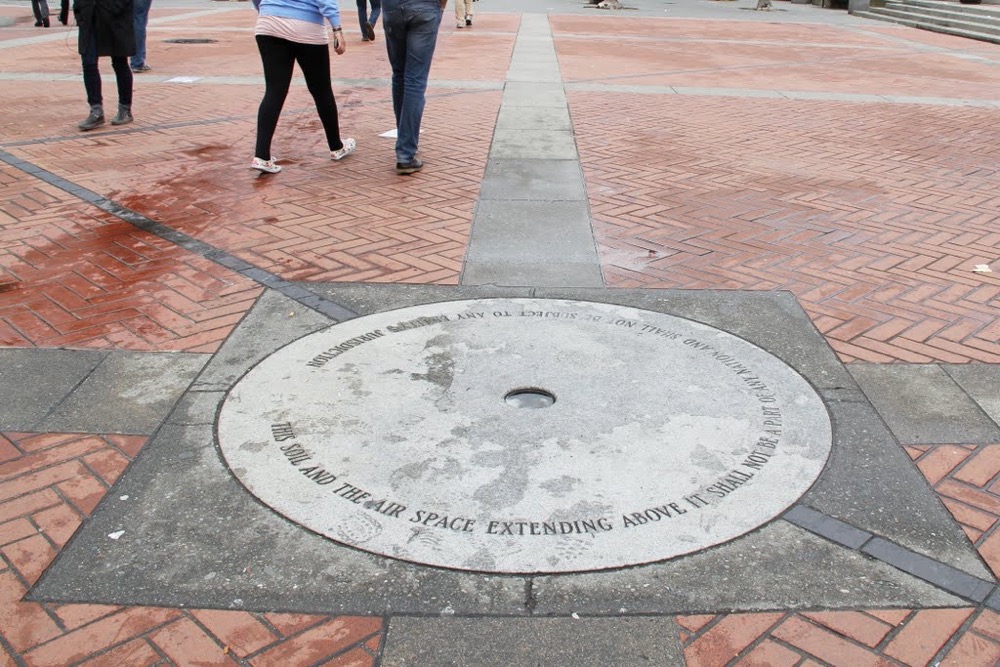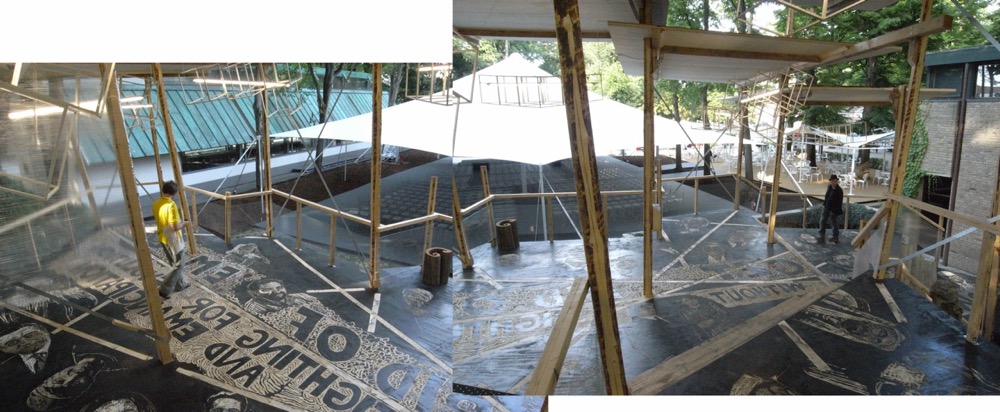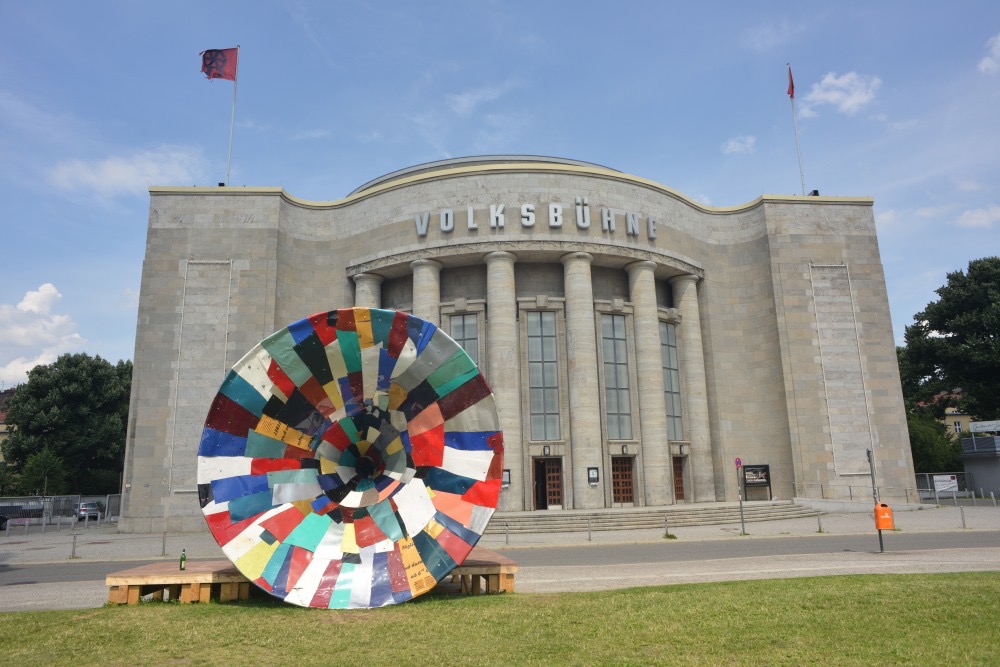“If the freedom of speech is taken away then dumb and silent we may be led, like sheep to the slaughter.” - George Washington
Freedom of speech and freedom of expression are integral to any form of art, without them there can be no art. Though architecture serves a functional process as well as a creative one, without freedom of speech, our buildings and monuments would be reduced to grey boxes and pictures of political leaders - as they have been in many strict regimes. As such, many monuments and exhibitions have been held worldwide to exemplify the importance of freedom of speech.
Newseum - Washington, DC
The right to freedom of speech is so highly regarded in the US that it forms the cornerstone of their independence and culture. As such it is highly regarded and fervently protected in the US. The Newseum, located on historic Pennsylvania Avenue, champions the five freedoms of the First Amendment through exhibitions, public programs and educational features.
It is a popular tourist attraction for those visiting the US capital as well as running education initiatives such as school visits and onsite classes and workshops. It also hosts a website - NewseumED.org - which provides free resources, videos and lesson plans to teachers and students around the world, impacting more than 1.5 million students in total each year.
Free Speech Monument - Berkeley College
Created to commemorate a civil rights and free speech protest by students at UC Berkeley in 1965. This monument reads, "This soil and the air space extending above it shall not be a part of any nation and shall not be subject to any entity's jurisdiction." Image source: https://flic.kr/p/aCywSn
Monuments to the right to freedom of speech need not be large or imposing, the Free Speech Monument in the quad of California’s Berkeley college is so unassuming that one could walk over it without noticing - a fitting metaphor for how many of us take our own freedom of speech for granted.
Situated in front of Sproul Hall, the monument itself is a round cement stone set flat into the walkway. Carved into it is the statement, “This soil and the air space extending above it shall not be a part of any nation and shall not be subject to any entity’s jurisdiction.” The center of the disc holds a small patch of soil, but it is the space above it that is the real monument. The tiny tube of unregulated space is said to be a place where free-thinkers and protesters can say whatever they like, a privilege that extends all the way into space and beyond.
Ironically, the university has in recent years placed restrictions on public assembly on campus grounds. However the ‘invisible tube’ remains a place where individuals can speak their minds and make their voice heard.
Berlin Wall Memorial - Berlin
Monuments to freedom of speech and expression are usually physical objects that are meant to last for the ages. Despite their size or greater meaning, these monuments make a statement with their presence. However, the Berlin Wall makes a statement with its absence. This June will mark 29 years since US President Ronald Reagan stood in front of the concrete-and-barbed-wire emblem of the Cold War and challenged Soviet leader Mikhail Gorbachev with the now iconic phrase.
“Advance dramatically the cause of freedom and peace … Mr. Gorbachev, tear down this wall!” 
The Berlin Wall Memorial extends 1.4 kilometers along the former border strip and contains the last small portion of the wall left standing. Image source: https://flic.kr/p/9VS3UZ
The Berlin Wall Memorial extends 1.4 kilometers along the former border strip and contains the last small portion of the wall left standing. The grounds surrounding the last remaining piece of the wall have been preserved in order to give a closer impression of how the border fortifications developed until the end of the 1980s.
Speech Matters - Danish Pavilion
The Danish Pavilion hosted an international group exhibition for the 54th Venice Biennale entitled Speech Matters in 2011. It explored how the issue of freedom of speech had been increasingly contested in light of global changes that threatened to take away this freedom to varying degrees. In addition to relating to Denmark specifically, it worked to highlight what is happening in countries around the world.
Since Denmark has a longstanding reputation of freedom of speech and freedom of press, it was a logical venue for an exhibition that sought to open a public debate on the topic. Speech Matters features 18 international artists of different generations, from 12 countries, displaying 13 new installations and work that was commission specially for the exhibition.
Pavilion for Revolutionary Free Speech - Thomas Kilpper
German artist Thomas Kilpper constructed his Pavilion for Revolutionary Free Speech as part of the 54th Venice Biennale exhibition on free speech. As one of three artists to create large outdoor commissions for the exhibition, Kilpper built his piece in the private garden of the Danish Pavilion. The structure was host to the Speaker’s Corner, an open balcony and public podium that held a series of specially commissioned language-based performances on the subject of freedom of speech.
Thomas Kilpper’s Pavilion for Revolutionary Free Speech at the 54th Venice Biennale exhibition on free speech. Image source: Thomas Kilpper
Kilpper followed up the Pavilion for Revolutionary Free Speech with another large scale piece entitled MEGAfon. The project was this time based in the centre of Berlin in 2013 in conjunction with his gallery Nagel-Draxler. The piece was set in a public space and addressed the issue of freedom of speech by acting like the speakers corner, allowing art and architecture to help each individual make their voice heard.
MEGAfon, a temporary exhibition by Thomas Kilpper on free speech. Image source: Thomas Kilpper
Have your say
If you believe as strongly as we do about every individual’s right to freedom of speech, check out our latest international architecture competition - Charlie Hebdo Portable Pavilion - which is calling for participants to create designs for portable pavilion to display the works of Charlie Hebdo. The purpose of the structure is to deconstruct the idea of free speech, reminding visitors that freedom of speech is a luxury not all people can enjoy.
Top 3 Reasons Why You Should Enter Architecture Competitions
Curious about the value of architecture competitions? Discover the transformative power they can have on your career - from igniting creativity and turning designs into reality, to gaining international recognition.
Learn more



























